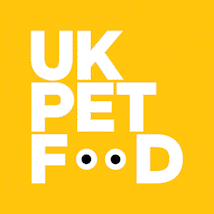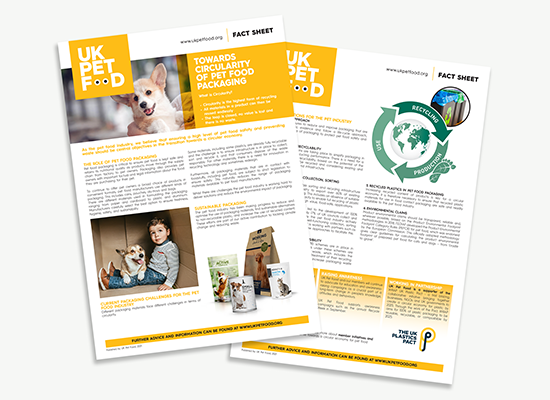Tips for shopping sustainably
How to shop more sustainably for pet food
Sustainability is now a key factor when we go about our business and our weekly food shop. Shopping for our pets and their food is no exception. We all want the best for our pets, and we are keen to feed them in a sustainable way.
Top tips for shopping sustainably when buying pet food
There's a lot to consider when buying pet food. Whilst research by WRAP (experts in Circular Economy & Resource Efficiency) concluded that only 1% of pet food goes into waste – far lower than for human food – with pet food, the topic of sustainability goes further than food and it’s packaging. It’s a multifactorial subject.
1. Ingredients – how sustainable are they?
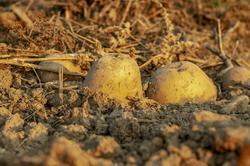
When it comes to pet food ingredients, we are conscious of sourcing pet food ingredients responsibly and sustainably.
Sustainable sourcing means ensuring to the best of our abilities that the ingredients we use have a positive impact on the local community and a limited impact on the ecosystems from which they are sourced.
Positives:
Pet food utilises unused ingredients ftom the human food chain, which might otherwise go to waste
Traditional pet food ingredients are renowned for being extremely sustainable and nutritious. Most ingredients are the unused ingredients from the human food chain. The animal-based ingredients come from animals, which are inspected by vets as fit for human consumption, but for a variety of reasons are not used in human food.
These are high quality and nutritious sustainable cuts of meat and organs that people usually don’t eat for instance offal (e.g., liver and tripe) and pig’s trotters. This also means that no animal is raised specifically for pet food. Plant based (grain and vegetable) by-products such as soy leftovers, broken rice and beet pulp are also used in pet food manufacture. The use of these unwanted ingredients also benefits the farmer by providing an outlet for what would otherwise be costly to dispose of.
CLICK HERE to find out more about 'What goes into pet food'
Considerations:
Identifying new ingredients
As an industry, we are aware that as the squeeze on resources and food availability continues, we need to look at further solutions to minimise the environmental impact and as a result much research is going on to identify alternative food sources such as insect-based pet foods.
Click HERE to download our PDF fact sheet on 'Insect-based pet food' and HERE for our 'Cell-cultivated products' factsheet
Keep an eye on the quantities you're feeding
Widespread research has confirmed that the many of our pets are sadly overweight or obese, and a key contributory factor is overfeeding. Pets are happier and healthier if fed the right amount of food and it is important to follow the guidelines on the pet food packet.
Plus, adjustments may need to be made according to age, size, activity levels etc. Feeding the appropriate amount is also far more sustainable and there will inevitably be less waste and less of an impact on our environment.
CLICK HERE to find out more about managing your pet's weight
2. Packaging – how recyclable is the pet food packaging?
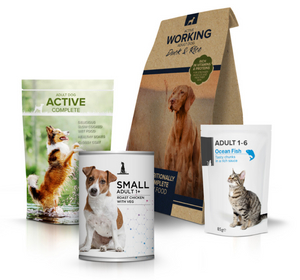
Pet food packaging is a more complex area and is a focus for the industry.
It is often the first thing a pet owner examines when purchasing a food, as it details important factual information and plays a critical role in ensuring that the food is kept safe and retains its nutritional quality.
We are balancing these packaging requirements with the need to be sustainable, with many manufacturers leading the change.
CLICK HERE to find out more about our members' packaging initiatives.
Challenges:
Wet food pouches
Pet food comes in a variety of formats and manufacturers carefully select the best option for packaging to ensure freshness, hygiene, and safety. Currently, wet food pouch packaging is one of the most difficult challenges from a sustainability perspective.
Pouches are tricky to recycle because they are made from thin layers of different materials. Whilst recent innovations have led to the development of 100% recyclable pouches, currently only 17% of UK councils collect and process this material.
This is why the pet food industry actively supports the development of a well-functioning collection, sorting and recycling system in the UK.
UK Pet Food is also proud to be a supporter of the UK Plastic Pact. The Pact brings together the entire plastics value chain together with the aim of eliminating problematic plastics by 2025.
3. Manufacturing process – what are the environmental impacts of how the food is produced?
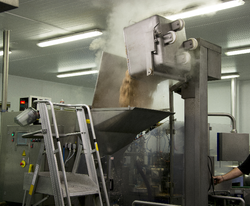
The exact impact of the manufacturing process is something that is hard to quantify for the industry and therefore even harder for pet owners!
However, owners can be reassured that the industry is working with partners to develop a system to measure the carbon footprint of pet food. In fact, the European pet food federation, FEDIAF, has developed the Product Environmental Footprint Category Rules (PEFCR) for pet food, which is endorsed by the European Commission. This gives clear guidelines for calculating the product environmental footprint of prepared pet food for cats and dogs.
Through FEDIAF, UK Pet Food will continue collaborating with the EU institutions to determine how this methodology can be used under future policy framework.
4. Animal welfare – has the welfare of the whole food chain been considered?

At UK Pet Food, our members collaborate on this subject. The welfare of both farm and companion animals is fundamental to our work, and we strive to safeguard high standards.
Through our collaborative work, we are promoting animal welfare and contributing to a more sustainable future. We understand that animal welfare correlates closely with improved conservation, improved food safety and food security, and improved wellbeing.
The pet food industry also works closely with many influential voices in the welfare sector to ensure animal welfare is a key consideration. For example, we are a co-sponsor of the All-Party Group for Animal Welfare (APGAW). We also work in partnership with the Canine Feline Sector Group and National Pet Month to educate about healthy lifestyles for companion animals (beyond food and feeding).
CLICK HERE to download our 'Animal Welfare Framework' PDF
